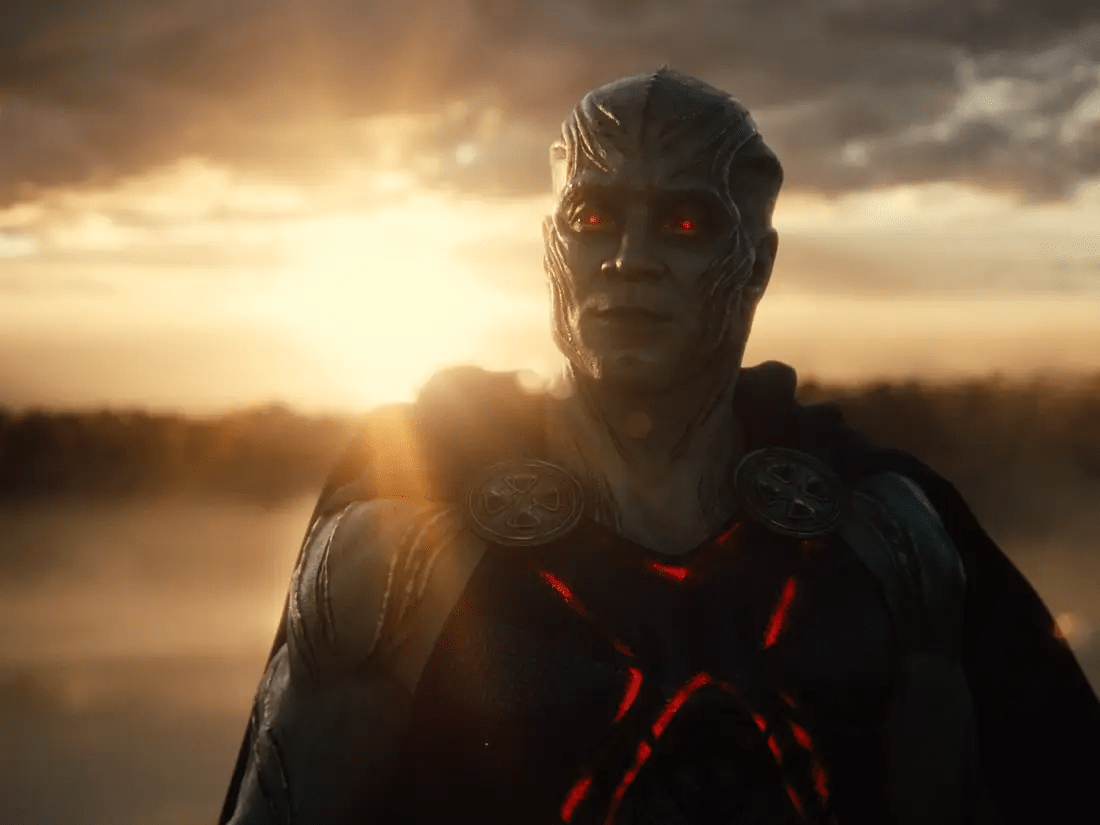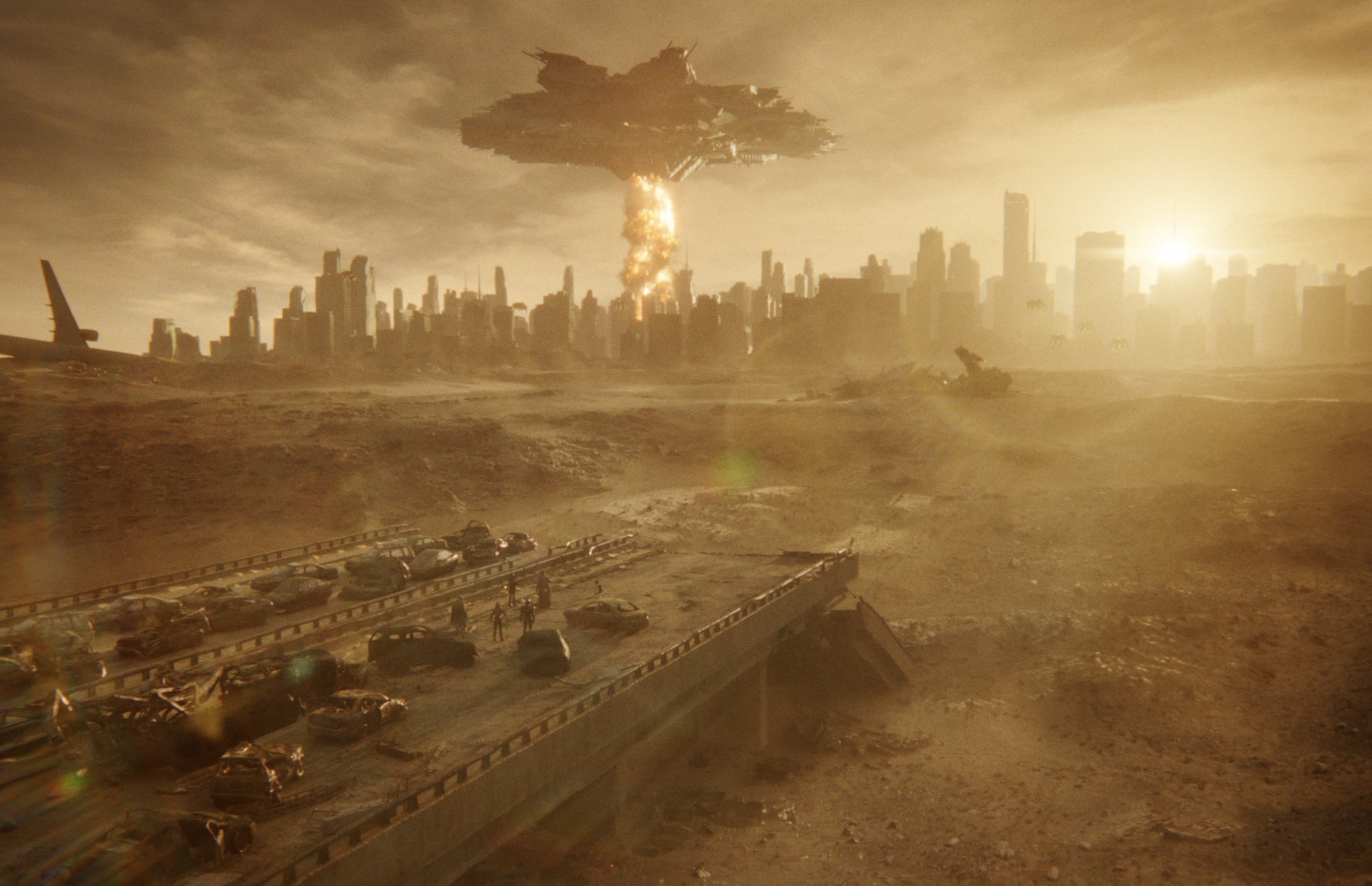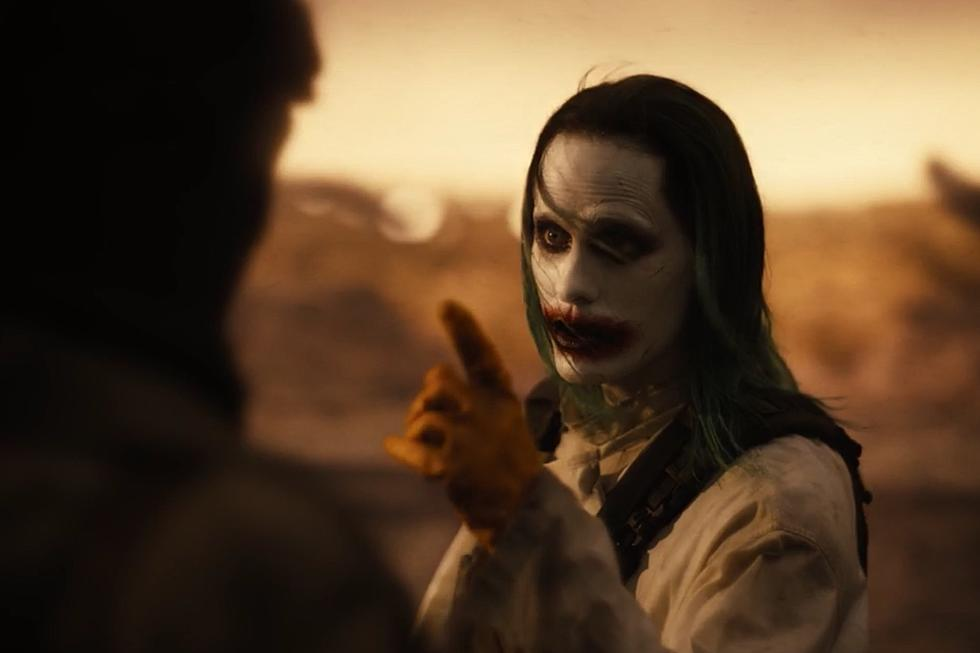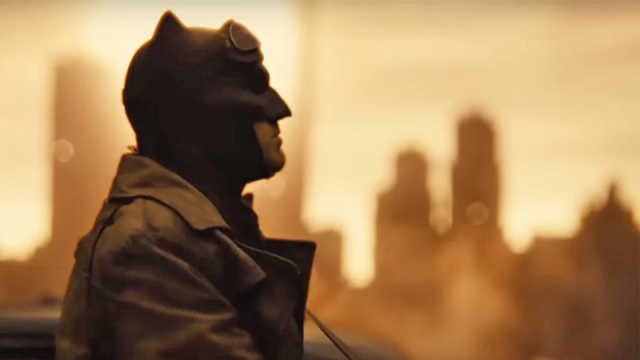Zack Snyder’s Justice League is, in ways good and bad, an exercise in indulgence. After all, it is Snyder’s unleashed vision for what his Justice League movie could have been, in some form, writ large: literally, given that the film is a four-hour undertaking. But for all its extensions and additions, its most peculiar indulgence is one that, in the context of its road to release, is a ticking time bomb waiting to go off.

By the time Justice League is actually wrapping up — the day has been saved, the Mother Boxes separated, Steppenwolf’s (Ciaran Hinds) head separated from his body and sent packing back to Apokolips and under the heel of his master Darkseid (Ray Porter) — you might be surprised to discover that there is still somehow roughly 30 minutes of the film left. What follows, simply titled “Epilogue” (unlike the six named “parts” the film is divided into), is at once fascinating, viscerally exciting, and yet somehow also oddly chilling.
Justice League’s epilogue is, essentially, three post-credit sequences that, instead of being a couple of minutes, are stretched out to present an alternate world where it’s early 2017 and despite a few critical lumps, Zack Snyder is still the guiding architect of Warner Bros.’ DC Comics theatrical slate. The first and shortest of the threads Snyder tugs on is simple enough: a drowsy Bruce Wayne (Ben Affleck) is roused from bed by the arrival of a surprising guest, a green-skinned alien who calls himself the Martian Manhunter (Harry Lennix, who makes a baffling appearance halfway through Snyder’s movie before disappearing until this very moment). The Manhunter promises Bruce that there will be threats that require the Justice League, who mostly go their own ways by the film’s proper end, to come together once more — and that he’ll be willing to lend a hand.

If Justice League’s epilogue ended there, it’d be fair enough, a small little post-credits tease in the style of the genre, a farewell to this version of the DC movieverse while also leaving a small window to fans that doesn’t entirely close the loop. But, it keeps going, and things only get weirder.
What follows that moment is another we’d kind of already seen as the post-credits scene of the 2017 Justice League from Joss Whedon: Jesse Eisenberg’s Lex Luthor, now free from Arkham Asylum, offering the vigilante assassin Deathstroke (Joe Manganiello) an alliance and a tempting tidbit of information in the form of Batman’s true identity. Another door thought closed now ponderously opened, but this is an altogether more peculiar addition on top of the Martian Manhunter scene; Affleck’s career as Batman since the 2017 film first released has paradoxically ended and continued anew because Batman truly is forever.
But it’s in its final moments that Justice League’s epilogue throws wide the gates into something that goes beyond an oddity. The largest sequence of the three — and one of the few entirely-new additions Snyder shot after being approached by Warner Bros. to actually finish his Justice League cut last year — is more than a wistful imagining of what could’ve been. It is Snyder revealing his future vision to a legion of fans who, having spent the past four years marshaling campaigns good and ill to see this movie through, now have the impetus to go “Well, it worked last time. Why not more?”

This extended sequence is set in the “Knightmare” alternate timeline briefly glimpsed in Batman v Superman, and what would’ve been, according to new interviews the director conducted last week, the major focal point of two more Justice League films. The scene quickly establishes that the Batman of this alternate timeline (an apocalyptic Earth, ravaged by Darkseid’s invasion) has formed a tag-team with some unlikely friends and unlikelier foes: Ray Fisher’s Cyborg, Ezra Miller’s Flash, and Amber Heard’s Mera, the aforementioned Manganiello’s Deathstroke…and Jared Leto’s Joker. The team plans their attempts to get past Darkseid’s patrols undetected, the Joker ribs Batman the way the Joker so often does, but then it’s revealed that the team has been spotted by Darkseid’s agent: a mind-controlled Superman.
[referenced id=”1681466″ url=”https://gizmodo.com.au/2021/03/a-black-and-white-justice-league-and-a-regular-tenet-are-coming-to-hbo-max/” thumb=”https://gizmodo.com.au/wp-content/uploads/2021/03/22/mcwwuh3eytnapfyeihbx-300×169.png” title=”A Black and White Justice League and a Regular Tenet Are Coming” excerpt=”A lot of people took four hours out of their weekends to watch Zack Snyder’s Justice League on HBO Max and the streamer is betting you’re willing to do that again to watch it sans colour. Also, despite Christopher Nolan’s annoyance, his timey-wimey Tenet will also be making its way…”]
The scene is more than the wonder Snyder had when he first publicly revealed his plans to recruit Leto for new footage — the idea of getting to see Affleck’s Batman confront what was, in one timeline, meant to be “his” Joker. It’s more than calling back to the apocalyptic sequences of Batman v Superman to truly tie the bow on Snyder’s era of DC storytelling. It takes a movie that was, in a lot of ways, largely done — plenty of small doors left askance, sure, but it still with a sense of finality — and shunts it into a now awkward state of un-doneness. All this potential energy is suddenly blasted in your face after you’ve been lulled into four hours of blockbuster superheroics and makes for an awkward endcap — how did Batman unite these people, how did Superman fall, what was meant to happen to undo all this? But the scene is also, in some ways, a promise. There could always be more, if only there were someone to ask for it.

In the few days since Justice League’s release, Snyder has played a paradoxical game with the press — to Vanity Fair, he essentially shotgunned his entire hypothetical movie roadmap to spin out of this scene, to trades like Variety and Deadline, he’s seemingly tried to make it clear that he is very much done with the prospect of making more DC movies (for now, at least). But in sidestepping Justice League’s finality by throwing a realm of messy possibilities on the table, the director has, whether he intended to or not, left another rallying call to his most diehard fans, just as he did years ago with snapshots of the film reels his unfinished Justice League assembly cut.
The “Snyder Cut” is a project that cannot be discussed without the context of its road to a surprising existence. Like the final film itself, it’s a long journey that encompasses highs and lows — as Snyder has regularly liked to note in his the press tour running up to Justice League’s debut, many of his fans have rallied to donate hundreds of thousands of dollars to charities dealing with suicide and mental health issues. But there’s also the other corner of Snyder’s fandom that has also spent the four years in the run-up to the movie harassing critics, harassing Warner Bros. executives, and seeking out naysayers on social media at any ill-mention of the director, benign or otherwise, in a virulent, toxic manner. They too have been emboldened to keep doing so as the movie came closer and closer to fruition.

It’s a segment of support that Snyder is only just now beginning to wrestle with, even as he’s previously denied it. Last Thursday, the director made a wave amongst reactionary groups while appearing on a fundraiser for the American Foundation for Suicide Prevention. He pushed back on any association with the toxic right-wing YouTube channel Geeks + Gamers — myriad videos discussing the perceived “culture war” around large pop culture franchises such as DC, Star Wars, and Marvel, known as a hub for expressing bigoted, racist, and sexist “anti-woke” views — an act that was perceived by certain Snyder fans as a betrayal of their support.
To these two very different audiences then, Justice League’s epilogue offers a similar siren call. Instead of bringing a sense of closure, there’s this underlying concern that this potential energy raised by the road to the “Snyder Cut” has to go somewhere, now especially bolstered by something all fans can turn to and ask for more of. As the director and his fans alike find themselves reckoning with the toxic aspects of their fellow supporters in the “Snyder Cut” movement, the opulence of its final bow might become a dangerous tool indeed.
